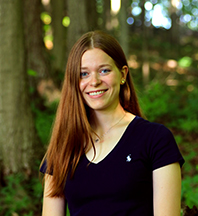Week of April 28, 2024 – May 4, 2024

by Elizabeth Suzedell, Environmental Educator
After 26 weeks of counting the birds at our feeders, the Project Feederwatch season has come to an end. Every year, Baltimore Woods staff and volunteers record the birds that visit our feeders for this international citizen science project, which runs from November 1st to April 30th. Data from these feeder bird counts around the United States and Canada gives scientists valuable information about bird populations, which is crucial for bird conservation efforts.
Our bird feeders are in the backyard of the Interpretive Center, surrounded by native trees and shrubs, brush piles, and a nearby water feature. There are two hoppers, two tubes, and two platform feeders- all filled with a variety of foods including black-oil sunflower seeds, mixed nuts, dried fruit, cracked corn, and millet. There are also two suet feeders. The area is easily viewed from inside our big program room, which is very convenient for close-up viewing and cold days!
This season, we saw a total of 33 different bird species in our feeder area. Some species visited our feeders almost every week, like the red-bellied woodpecker, downy woodpecker, hairy woodpecker, black-capped chickadee, tufted titmouse, white-breasted nuthatch, and American goldfinch. Once we got deeper into the winter, we had some other species become regular visitors, like the blue jay, american crow, brown creeper, carolina wren, white-throated sparrow, and northern cardinal. The pair of pileated woodpeckers at the suet was a special favorite for a lot of us this winter.
It brought us and our visitors joy to see all of the different kinds of birds at our feeders, but we were always excited by the possibility of seeing a new or less common species. Cooper’s hawks have nested near the building in the past, and we saw them again this year several times. Early in the season, we spotted the tiny and active golden-crowned kinglet and a bright red fox sparrow in the apple tree. It was fun to see (and hear) some other finch species, like purple finches and the buzzing pine siskins. When a flock of close to 200 blackbirds (grackles and red-winged blackbirds) bombarded our feeders one snowy afternoon in late February, we couldn’t help but watch in awe. Once it got warmer, a white-crowned sparrow showed up for a little while. This year, we also recorded mammals- it was mostly squirrels and chipmunks, but we did see a beautiful red fox run through twice!
Bird feeding is a great way to connect with nature right in your backyard. Combined with growing more native plants, it supports birds as they face their greatest threat of habitat loss. Anyone can participate in Project Feederwatch- if you’re interested in participating next season, all you need is a place to watch birds and an internet connection to add your counts to the website.
What interesting birds did you see around your neighborhood this winter? Are you seeing new birds now that it’s spring?

